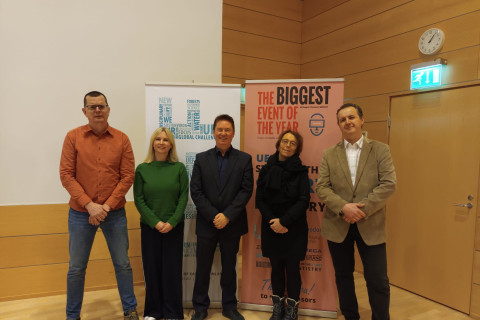The Institute of Dentistry at the University of Eastern Finland recently hosted a hybrid conference on the use of VR-haptics in dental education. The VR-Haptic Thinkers Meetup was the first event of its kind and brought together over 200 students, dentists, and scientists from 38 countries, either online or on-site in Kuopio.
According to Professor Barry Quinn from the University of Liverpool, Secretary General of the Association of Dental Education in Europe (ADEE), simulation has become an indispensable tool in the training of dental and medical students. “We should not be sending any of our students to do a procedure for the first time on a patient,” Quinn said.
Haptics-enhanced virtual reality training combines virtual simulation with sensory feedback and is increasingly used in dental training in addition to the traditional phantom head simulation. In his presentation, Quinn pondered how realistic the simulation has to be.
High-fidelity simulation training has been shown to enhance cognitive engagement and ease transition to the clinics. Quinn pointed out that cheaper low fidelity simulators are effective for basic skills. However, students are increasingly expecting high-fidelity simulators, which will get better and cheaper in the future.
“Technology enables users to collect data of performance and thus is a valuable tool in enhancing quality assurance,” mentioned Associate Professor Marjoke M. Vervoorn from the Academic Centre for Dentistry Amsterdam (ACTA) as one of the benefits of simulation training.
She also brought up the acceptability of new technology among dental professionals, pointing out that technology needs to solve problems they consider relevant in their work, which shouldn’t be just determined from above.
Both ADEE and the American Dental Education Association ADEA will be supporting the formation and future meetings of the VR-Haptic Thinkers network.
The recorded lectures of the invited speakers and ePosters can be found at the Meetup website.
The proceeding has been published in the Online Journal of Dentistry & Oral Health, OJDOH: http://dx.doi.org/10.33552/OJDOH.2023.07.000665
For further information, please contact:
University Teacher Szabolcs Felszeghy, Institute of Dentistry, https://uefconnect.uef.fi/en/person/szabolcs.felszeghy/



